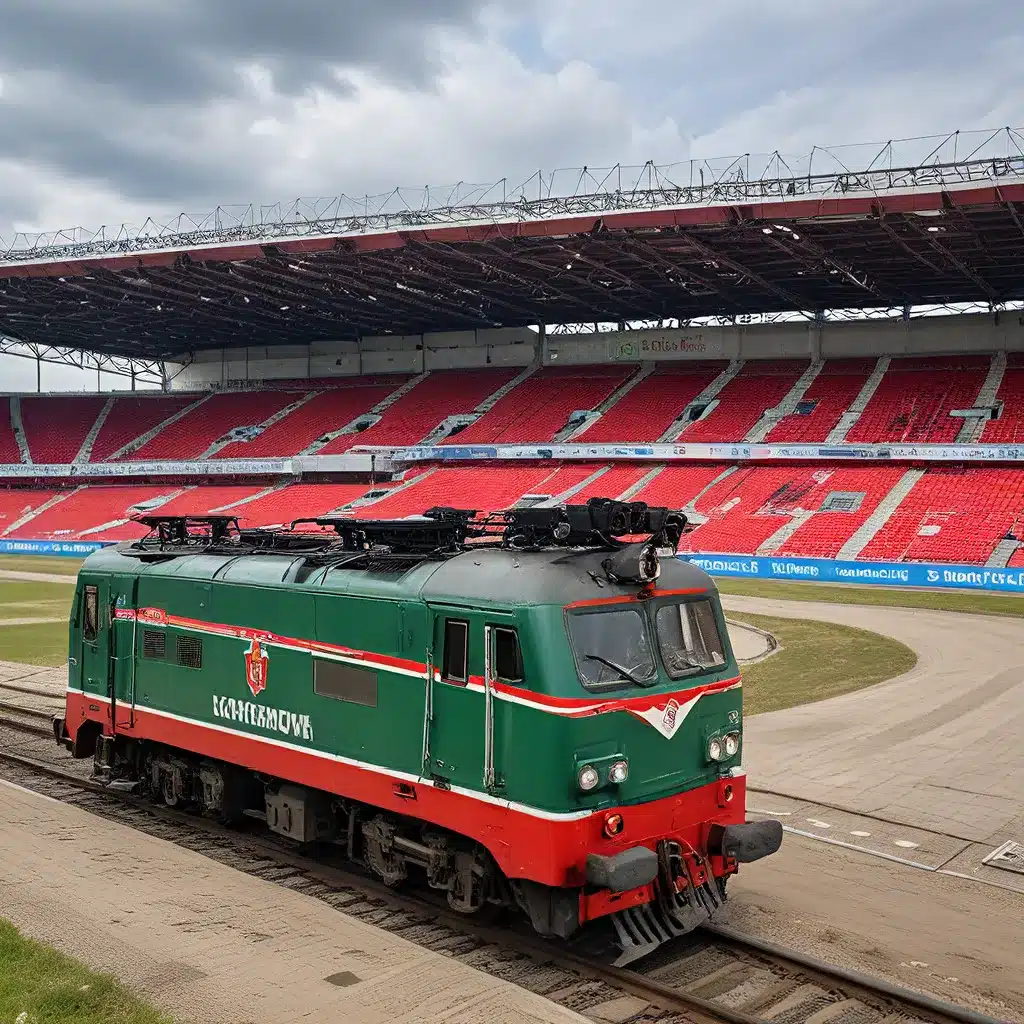
The Storied History of a Stadium Born from the Rails
The Lokomotiv Stadium, nestled in the heart of Moscow, stands as a testament to the enduring spirit of the Lokomotiv Moscow football club. This iconic venue, with its rich history and unwavering dedication to the sport, has become an integral part of the city’s cultural fabric.
Tracing its roots back to the early 20th century, the Lokomotiv Stadium has witnessed the triumphs and tribulations of one of Russia’s most beloved football clubs. Founded in 1922 as Kazanka Moskovsko-Kazanskaya ZhD, the team was initially composed of the strongest players from the Moscow railway system. Over the years, the club underwent several name changes, eventually settling on the moniker “Lokomotiv,” which means “Locomotive” in Russian.
Lokomotiv Moscow has long been associated with the Lokomotiv Voluntary Sports Society, an organization that was owned by the Soviet Ministry of Transportation through the Russian Railways. This deep-rooted connection with the railway industry has not only shaped the club’s identity but also influenced the design and construction of the Lokomotiv Stadium.
The Stadium’s Transformation
The current Lokomotiv Stadium, opened in 2002 after a comprehensive reconstruction, is a far cry from its humble beginnings. The original stadium, built in the 1930s, was a modest affair, reflecting the era’s limited resources and technological capabilities. However, the club’s growing success and the city’s desire to showcase its football prowess prompted a major renovation project in the early 2000s.
The new Lokomotiv Stadium, designed by renowned architect Andrei Romanov, is a modern marvel that seamlessly blends functionality and aesthetic appeal. With a seating capacity of 27,320, the stadium boasts a compact, traditional English-style design, creating an intimate atmosphere that enhances the match-day experience for both players and fans.
One of the stadium’s most distinctive features is the locomotive-inspired design elements, a nod to the club’s rich railway heritage. The imposing locomotive engine, strategically placed between the turnstiles and the main entrance, has become an iconic symbol, drawing visitors and fans alike to capture the perfect photograph.
Lokomotiv’s Triumphs and Tribulations
The history of the Lokomotiv Stadium is inextricably linked to the fortunes of the Lokomotiv Moscow football club. The stadium has witnessed the club’s triumphs and tribulations, from its early successes in the Soviet era to its more recent ups and downs in the post-Soviet landscape.
In the 1930s, Lokomotiv Moscow made its mark on the Soviet football landscape, winning the Soviet Cup in 1936 and establishing itself as a consistent contender in the national championships. The following decades saw the club’s fortunes fluctuate, with periods of relative success interspersed with relegations to the lower divisions.
The 1950s and 1960s were particularly significant for Lokomotiv, as the club managed to win the Soviet Cup in 1957 and even finish as runners-up in the Soviet League in 1959. This golden era was marked by the emergence of some of the finest Soviet footballers, including Vladimir Maslachenko, Valentin Bubukin, and Victor Voroshilov.
However, the club’s fortunes began to wane in the latter half of the 20th century, with Lokomotiv struggling to maintain its position among the top Moscow teams. The early 1990s were particularly challenging, as the club was considered the weakest link among the capital’s elite teams, lacking both on-field success and fan support.
A New Era of Success
The dawn of the 21st century brought a renewed sense of optimism to Lokomotiv Moscow and its devoted supporters. In 2002, the club’s new stadium, the Lokomotiv Stadium, was completed, providing a modern, state-of-the-art home for the team’s matches.
The stadium’s inauguration coincided with a surge in Lokomotiv’s on-field performance, as the club went on to secure its first-ever Russian Premier League title in 2002. This triumph was followed by another league championship in 2004, solidifying Lokomotiv’s status as a force to be reckoned with in Russian football.
The stadium’s influence on the club’s success cannot be overstated. The compact, English-style design and the passionate support of the home fans have created an electric atmosphere that has often proved too much for visiting teams to handle. The stadium’s location, nestled within a sprawling urban landscape, has also contributed to its unique character, with fans often combining their match-day experience with a visit to the nearby Sokolniki Park or other cultural landmarks.
The European Stage and Beyond
The Lokomotiv Stadium’s significance extends beyond the borders of Russia. The club has found success on the European stage, reaching the semi-finals of the UEFA Cup Winners’ Cup in 1997-98 and 1998-99. The stadium has also hosted UEFA Champions League matches, with Lokomotiv Moscow competing in the prestigious competition during the 2002-03 and 2003-04 seasons, even progressing past the group stage in the latter campaign.
These European exploits have further cemented the Lokomotiv Stadium’s reputation as a venue capable of hosting high-profile international matches. The stadium’s modern facilities, coupled with its passionate fan base, have made it an attractive option for hosting UEFA club competitions and even potential international fixtures.
The Future of the Lokomotiv Stadium
As Russia’s football landscape continues to evolve, the Lokomotiv Stadium remains a vital part of the country’s sporting heritage. The stadium’s capacity for hosting major events, combined with its strong connection to the Lokomotiv Moscow club, suggests that it will continue to play a significant role in the years to come.
Ongoing developments within the Lokomotiv organization, such as the club’s commitment to youth development and the integration of new coaching philosophies, are likely to shape the stadium’s future. Moreover, the stadium’s location within the wider Sokolniki Park complex presents opportunities for further integration with the local community, enhancing the match-day experience for fans and visitors alike.
As Russian football continues to evolve, the Lokomotiv Stadium stands as a testament to the enduring power of the sport to unite communities and inspire generations. Whether through its rich history, its architectural significance, or its ability to captivate fans, this stadium remains a vital part of Moscow’s cultural landscape, the locomotive that powers the city’s footballing might.

